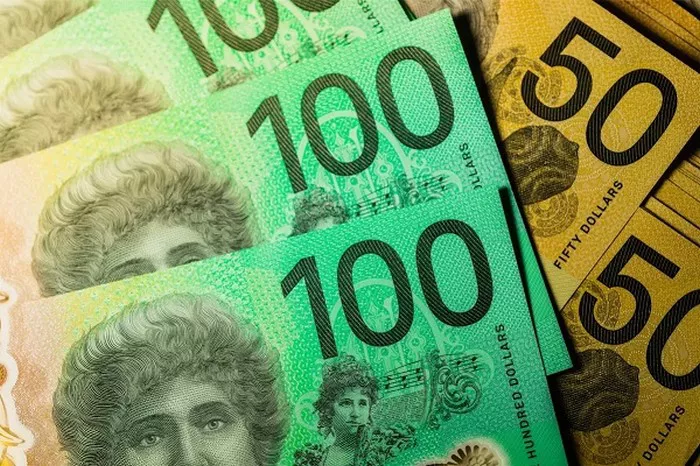The Australian $20 note holds a significant place in the country’s currency system, symbolizing its rich history, culture, and achievements. Introduced in 1966, following the adoption of decimal currency, the $20 note has undergone several design changes and security enhancements over the years. It is widely circulated and recognized as a reliable medium of exchange in daily transactions across Australia.
Design and Features:
The $20 note boasts a vibrant color scheme dominated by orange hues. Its dimensions are 144mm × 70mm, making it slightly larger than its counterpart, the $10 note. The front of the note features a portrait of Mary Reibey, a prominent figure in Australia’s colonial history, alongside a depiction of a colonial building, reflecting the nation’s early architectural heritage. The reverse side showcases the Indigenous art of the Eastern Kuku Yalanji people, with motifs representing the Rainbow Serpent and traditional hunting tools.
In terms of security features, the $20 note incorporates advanced elements to deter counterfeiting, including a clear window with a dynamic rolling color effect, a microprint portrait of Mary Reibey, and intricate raised printing that can be felt by touch.
Historical Figures: Detailed Profiles of the Individuals Featured on the Front and Back of the Note, Including Their Contributions to Australian Society
Mary Reibey: Born in 1777 in England, Mary Reibey was transported to Australia as a convict at the age of 13. Despite her challenging start, she emerged as a successful businesswoman, becoming one of the wealthiest individuals in the colony of New South Wales. Reibey’s entrepreneurial ventures included trading, shipping, and property investment. She played a crucial role in shaping early Australian commerce and is remembered for her resilience and determination in overcoming adversity.
Eastern Kuku Yalanji People: The reverse side of the $20 note celebrates the rich cultural heritage of the Indigenous Australians, specifically the Eastern Kuku Yalanji people from the rainforests of Far North Queensland. Their artistry is depicted through intricate designs that carry spiritual significance, reflecting a deep connection to the land and ancestral traditions. The inclusion of Indigenous motifs on the note acknowledges the enduring contributions of Australia’s First Nations peoples to the nation’s identity and heritage.
Cultural Significance:
The selection of Mary Reibey and the Eastern Kuku Yalanji people for the $20 note reflects Australia’s commitment to honoring diverse perspectives and narratives within its national currency. Mary Reibey represents resilience, enterprise, and the spirit of overcoming adversity, embodying the pioneering ethos that helped shape modern Australia. Meanwhile, the Indigenous artwork pays homage to the continent’s original inhabitants, recognizing their enduring connection to the land and their profound cultural legacy.
Security Elements:
The Australian $20 note incorporates a range of sophisticated security features to safeguard against counterfeiting. These include:
A clear polymer window with a dynamic rolling color effect, making replication difficult.
Microprint featuring intricate patterns and text, visible under magnification.
Tactile elements such as raised printing and embossing, allowing for easy verification by touch.
Holographic features that change color and shape when viewed from different angles, providing an additional layer of authentication.
These security elements make the $20 note highly resistant to reproduction by counterfeiters, ensuring the integrity of Australia’s currency.
Material and Durability:
The Australian $20 note is printed on polymer substrate, a durable and long-lasting material that offers several advantages over traditional paper-based currency. Polymer notes are resistant to tearing, moisture, and general wear and tear, ensuring they remain in circulation for longer periods. Additionally, the use of polymer allows for the incorporation of advanced security features, enhancing the note’s integrity and longevity.
Changes and Updates:
Over the years, the design of the Australian $20 note has evolved to incorporate new security features and reflect changing cultural values. In 1994, the introduction of polymer substrate marked a significant advancement in currency technology, enhancing durability and security. Subsequent updates have focused on refining existing security features and refreshing the note’s aesthetic appeal while maintaining continuity with previous designs.
Collectibility and Value:
For collectors, Australian banknotes offer a fascinating glimpse into the nation’s history and cultural heritage. Older editions of the $20 note, particularly those featuring unique serial numbers, printing errors, or limited production runs, can command significant value on the collector’s market. Determining the value of a specific note involves considering factors such as its condition, rarity, and historical significance, as well as current market demand.
Comparison with Other Notes:
Within the Australian currency system, the $20 note occupies a central position as a medium of exchange for everyday transactions. It sits between the lower denominations, such as the $5 and $10 notes, which are commonly used for small purchases, and the higher denominations, including the $50 and $100 notes, which are often used for larger transactions or as a store of value. Each denomination in the currency system serves a specific role, reflecting the diverse needs of consumers and businesses.
Future of the $20 Note:
While there are no immediate plans to update the design of the Australian $20 note, ongoing advancements in security technology may lead to future enhancements to deter counterfeiting further. Additionally, as Australia’s cultural landscape continues to evolve, there may be opportunities to revisit the imagery and themes represented on the note to ensure they remain relevant and inclusive. However, any changes to the $20 note would likely be carefully considered to balance tradition with innovation and maintain public trust in the currency.
See Also Navigating Currency Regulations When Traveling to Australia
In conclusion, the Australian $20 note serves as a symbol of the nation’s heritage, resilience, and cultural diversity. Its design and features reflect a blend of historical figures, Indigenous artwork, and advanced security technology, making it both a practical medium of exchange and a cherished collectible. As Australia looks towards the future, the $20 note will continue to play a vital role in facilitating commerce and preserving the nation’s identity for generations to come.


